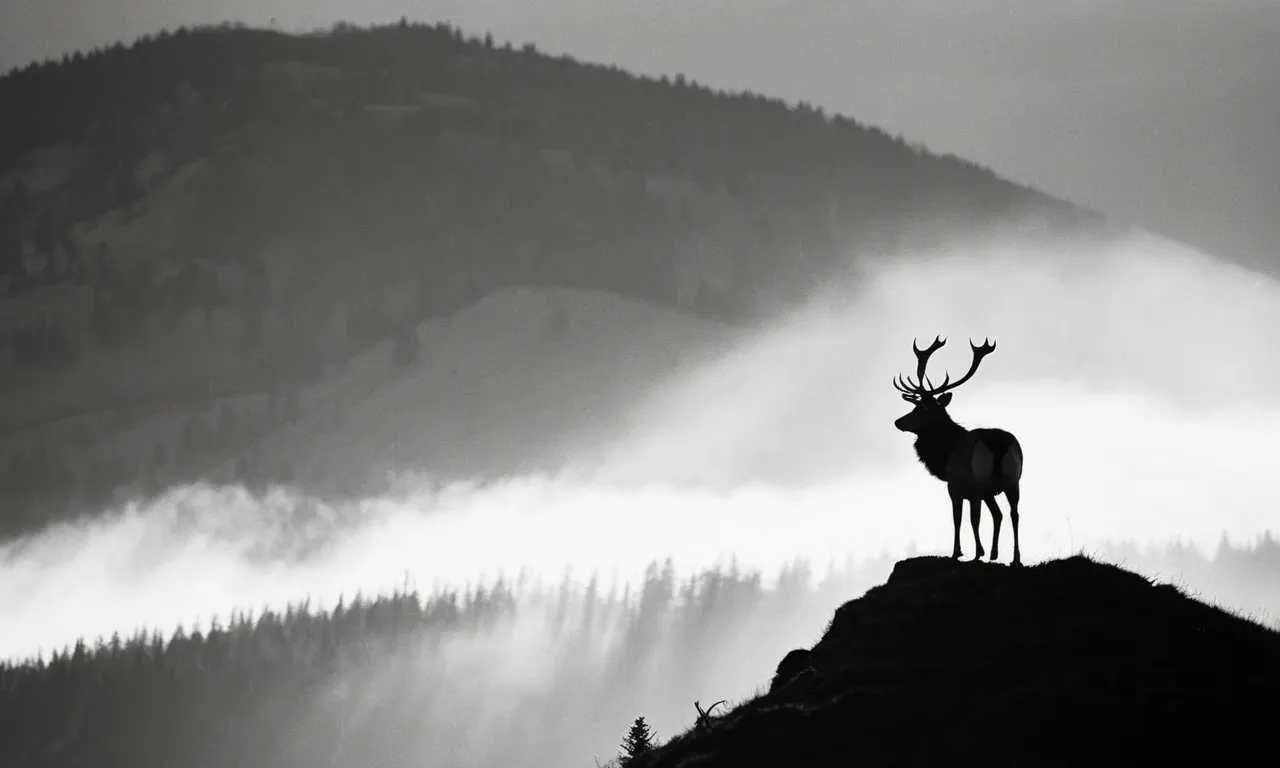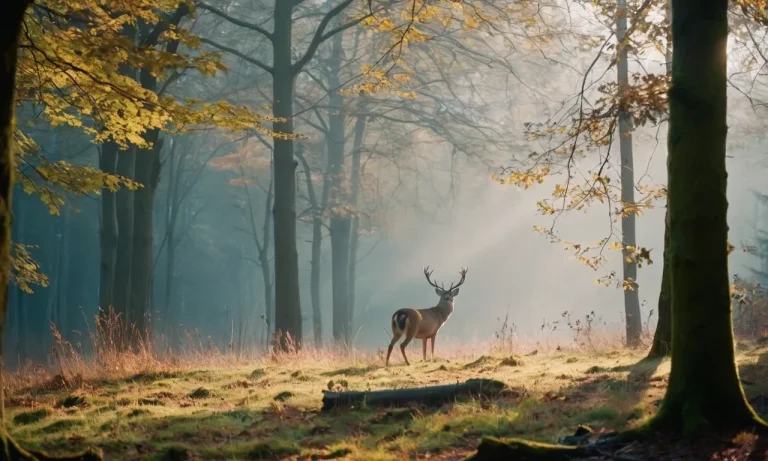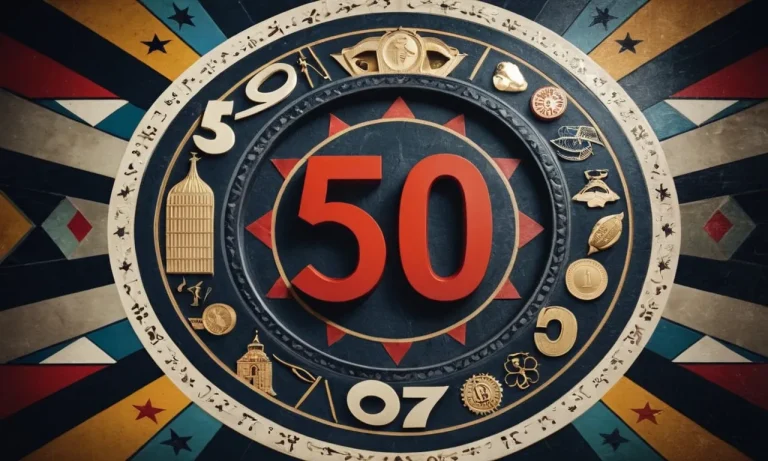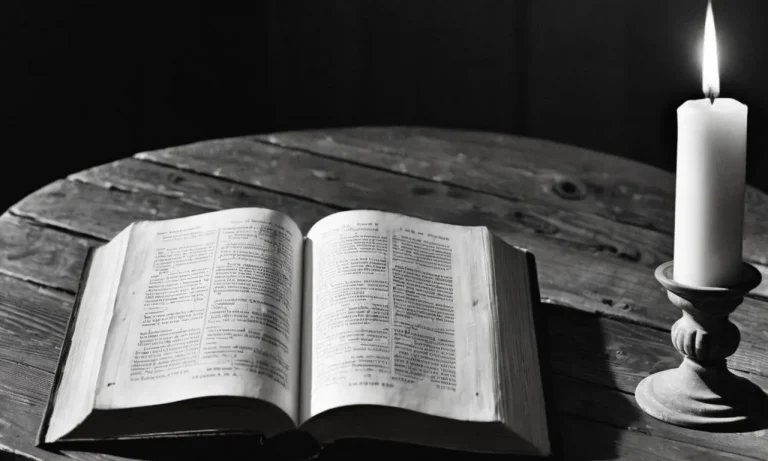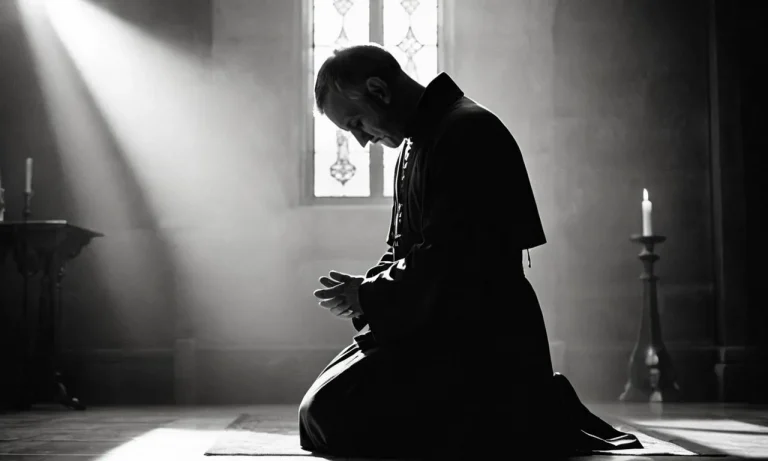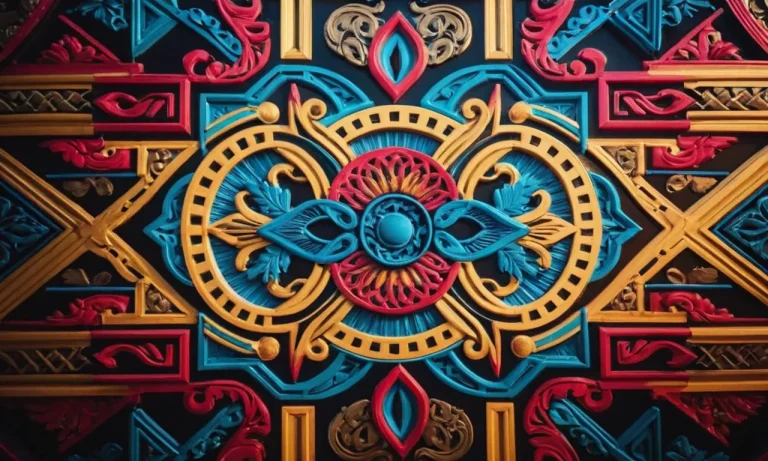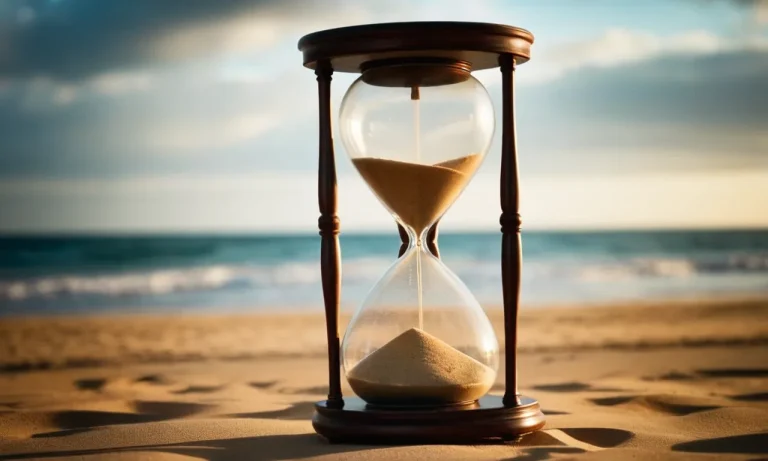Who Is The Horned God? A Comprehensive Look At This Important Pagan Deity
The horned god is an important pagan deity with origins dating back thousands of years. If you’re short on time, here’s a quick answer to your question: The horned god is a pagan symbol of masculinity, wilderness, hunting, virility, and the life cycle of birth, death and rebirth.
In this comprehensive guide, we will explore the history, symbolism, and modern pagan worship of the horned god. We’ll look at his links to nature, animals, and the seasonal cycle, as well as his connections to other pagan deities like the Green Man and Cernunnos.
What is the History and Origin of the Horned God?
Earliest Origins and Parallels with Nature Deities
The origins of the Horned God archetype can be traced back thousands of years to early pagan religions and the veneration of nature deities. Images and artifacts depicting horned gods have been found dating as far back as the Paleolithic and Neolithic ages.
These early representations often associated horns with power, fertility, and the life-death-rebirth cycle seen in nature.
Some scholars believe the origins of the Horned God may be linked to Paleolithic period cave drawings of horned animals and shamanic rituals in which participants wore horned headdresses to “harness the power” of animals.
These notions appear to have evolved over time into horned gods embodying wild nature, such as the Greek god Pan, Gaulish god Cernunnos, and Celtic gods like Herne the Hunter.
Links to Pan, Cernunnos, and the Green Man
The image and concept of the Horned God shares strong parallels with various pagan deities from ancient history and myth that were associated with nature, wildlife, the life-death-rebirth cycle, and fertility magic.
Three key figures that have clear ties to the Horned God archetype are:
- Pan: The Greek god of shepherds, nature, and wild places; often depicted with horns, goatish features, and a flute. Worship of Pan dates back to at least the 6th century BCE.
- Cernunnos: A mysterious Gaulish-Celtic god whose name means “Horned One;” associated with nature and fertility. Depicted with stag antlers on Iron Age artifacts.
- The Green Man: An ancient folklore persona representing the spirit of spring growth; often shown with antlers sprouting leaves, depicting the union of the forest god and vegetation.
These protean horned nature deities share much in common with the modern conception of the pagan Horned God.
Worship in Various Ancient Cultures and Religions
Horned gods have appeared in some form in numerous ancient pagan religions spanning the world and thousands of years:
- The Canaanite god Baal was depicted as a horned warrior-god who dies and is reborn each year. Worship of Baal dates to over 3,500 BCE.
- Old Norse, Celtic, and Germanic mythologies feature various horned gods like the mighty Odin, who bears slain warriors to Valhalla. Odin may descend from the Proto-Germanic god Wōden.
- Some scholars believe the bull-horned Mesopotamian god Ea (or Enki) later split into horned father gods like Zeus, Odin, Dagon, Moloch, and Bel, among others. Worship of Ea emerged around 4,000 BCE.
| Culture/Religion | Horned Deity Examples | Era |
|---|---|---|
| Sumerian and Mesopotamian | Ea, Dagon (possibly a precursor of Moloch or Baal) | Circa 4,000 – 2,000 BCE |
| Canaanite and Phoenician | Baal, Moloch | Circa 3,500 BCE onward |
| Old Norse and Germanic | Odin, Loki | Circa 900 BCE – AD 1,000 |
| Greek and Roman | Pan, Dionysus, Jupiter/Zeus | Circa 500 BCE – AD 400 |
| Celtic and Gaulish | Cernunnos, Herne the Hunter | Circa 500 BCE – AD 500 |
What Does the Horned God Symbolize in Modern Paganism?
Masculinity and Virility
The Horned God is often seen as a symbol of masculinity, virility, and male sexuality in modern Pagan traditions like Wicca. His horns are viewed as phallic symbols, representing fertility, strength and vitality. Many Pagans connect the Horned God to the untamed masculine power of the wilderness.
His dominion is over nature, animals, and human passions.
In ritual, the Horned God can represent the spark of divine masculine energy that fertilizes the Earth and brings the Wheel of the Year into motion each spring. Pagans may call upon his fertile powers when performing magic related to sexuality, vitality, hunting or instinct.
However, while potent, the Horned God also represents gentleness and protectiveness towards the natural world.
Animals, Hunting and the Wilderness
The Horned God is closely linked to stags, rams, goats and other horned animals. In Pagan iconography he may appear as a man with the horns of a stag or goat, or simply be depicted with the head of one of these beasts.
The horns connect him to these animals, which were seen as kings of the forest in earlier times when hunting wild game was critical to survival.
As lord of the forest, the Horned God rules over the chase. Pagans may appeal to him before a hunt, asking for a swift and merciful kill, or request that he drive game into their path. More broadly, he rules over all wilderness spaces, from forest to mountains to the deepest realms of nature where humans rarely tread.
The Seasonal Cycle of Life, Death and Rebirth
Perhaps most crucially, Pagans look to the Horned God as a symbol of the Wheel of the Year. He is born at Yule, comes of age at Ostara, grows in strength through Beltane and the summer months, then sacrifices himself willingly at Samhain so that the cycle can begin again.
Death is followed by rebirth, in tune with natural cycles.
This death and rebirth makes the Horned God a powerful symbol of transformation. By sacrificing all that he is at the end of Autumn, he makes compost for the next year’s growth. Pagans may meditate on the Horned God’s example during times of personal transition, change or turmoil.
His demise ushers in the chance for new beginnings.
How is the Horned God Worshipped and Celebrated Today?
Worship in Wicca and other Neopagan Religions
The Horned God is one of the primary deities worshipped in contemporary Pagan religions like Wicca. His worship takes many forms, both in organized ritual settings and personal spiritual practice. Wiccans and other Pagans may erect a shrine to the Horned God in their homes, make offerings to him, and invoke his presence during Sabbat rituals and Esbat gatherings.
Chants and prayers dedicated to the Horned God are common.
In Wiccan covens, the High Priest may embody or invoke the Horned God during ritual. This can involve everything from symbolically dressing and acting as the deity to channeling his energy. The High Priestess, representing the Goddess, will interact with the Priest in his Horned God aspect to simulate the sacred hieros gamos or marriage of the divine masculine and feminine.
LearnReligions.com describes several ways Wiccans personify the Horned God in this way.
Personal, solitary worship of the Horned God often takes a simpler form. Wiccans and Pagans may light candles, burn incense, and make food or drink offerings while praying to the Horned God. Carving horned god images into candles is another way to focus rituals on invoking his power.
Honoring the Horned God can be as elaborate or minimal as the practitioner desires.
Celebrations at the Solstices and Equinoxes
The Horned God is associated with the solar festivals marking the turning wheel of the year and the changing seasons. At Yule or the Winter Solstice in December, the rebirth of the sun god is celebrated – the days begin to grow longer as the Horned God is regenerated.
Pagans light fires and candles to mark the return of light and the Horned God’s growing strength.
At Ostara or the Spring Equinox in March, the fertility and virility of the Horned God is honored. The Spring planting season arrives as his power increases. Pagans dye eggs as offerings to the Horned God and Goddess at this time.
The Summer Solstice in June celebrates the Horned God at the height of his strength, with the longest day and shortest night of the year. CircleSanctuary.org describes Midsummer rituals honoring the Horned God’s sacrifice as the Wheel of the Year turns toward winter again.
At Mabon or the Fall Equinox in September, the Horned God relinquishes his strength as the Goddess takes over. His willing sacrifice represents the spirit of the crops and livestock slaughtered for the winter. At Samhain or Halloween, the death of the Horned God is commemorated.
Pagans take this time to honor deceased loved ones and reflect on the cyclical nature of life, death, and rebirth personified by the Horned God.
Representation Through Costumes, Effigies, and Shrines
Pagans create physical representations of the Horned God in various ways as part of ritual, magical practice, or religious decoration. A common way to invoke the Horned God in ritual is by wearing an antlered headdress or mask, often along with robes.
The High Priest of a coven typically wears horns while embodying the Horned God. Individuals may also wear horned costumes to symbolize the deity during personal practice.
Another way the Horned God appears is through effigies – sculptures, figurines, or illustrations depicting a horned man. These range from crude, homemade images to elaborate statuary and professionally-produced artwork.
Pagans place these effigies on shrines dedicated to the deity as a focal point for offerings, prayers, and spells directed toward the Horned God.
Shrines provide a space to revere the Horned God year-round or during specific rituals. They may contain candles, incense, stones, antlers, acorns, pine cones, and other natural items connected to the Horned God placed around an effigy.
Some shrines feature a statue or drawing of the deity surrounded by related symbols and offerings. Outdoor shrines allow contact with the energy of nature. An indoor shrine lets Pagans connect with the Horned God daily.
Conclusion
The horned god has roots extending back to early pagan religions but remains an important symbol and deity in modern neopagan faiths. He represents key concepts like nature, virility, the wilderness, the life cycle, and the seasonal year.
For pagans today, the horned god is celebrated in rituals and ceremonies tied to the solstices and equinoxes and finds expression through costumes, effigies and shrines.

